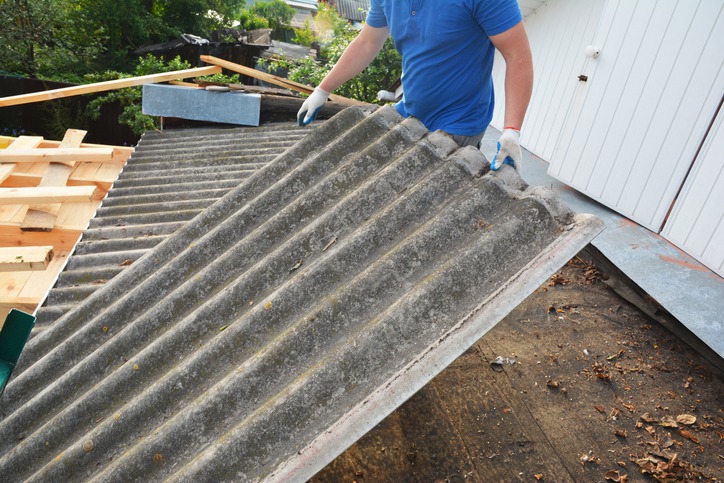Let’s face it, most of us don’t spend a lot of time thinking about our roofs. It’s just there, quietly doing its job of shielding us from sun, wind, rain, and snow. But like everything else, it doesn’t last forever. Eventually, a roof will show signs of wear and tear, which raises a big red flag that it’s time for a replacement. But how do you know when that time has come? Well, you’re in luck because we’re about to walk you through the classic tell-tale signs that your roof may be singing its swan song.
Visible Damage
Detecting damage from the ground can save you the hassle of dealing with leaks and costly repairs down the line. Here are some visible indicators that your roof is checking out:
-
Curled or Buckled Shingles: This is like your roof saying, “I can’t take it anymore!” Shingles that look bent out of shape are a clear sign that they aren’t protecting your home the way they should.
-
Missing Shingles: If you see gaps in your shingle armor, it’s a sign that your roof might be falling apart. It’s like missing teeth in a smile; it’s pretty obvious something’s not right.
-
Cracked Shingles: This can be due to wind damage. A few cracked shingles can be replaced, but if the cracking isn’t isolated to one area, you might need to start thinking about a bigger job.
-
Granules in the Gutters: Shingles lose more granules towards the end of their life cycle. Excessive granule buildup in the gutters signals that your roof’s days are numbered.
-
Sagging: A sagging roof is a serious issue, possibly pointing to structural problems. If the support system is compromised, you might need more than just a new roof.
Inside Story: What Your Attic Tells You
Your attic can sometimes give you the inside scoop on the state of your roof before any outward signs become visible. Take a flashlight up there and look for:
-
Daylight Through the Roof Boards: If you see the light beaming through, water can get through as well. That is not a good sign.
-
Stains and Streaks: These indicate that water is getting into your home, and it’s past time you sort it out. Water damage only gets worse over time.
-
Wet Insulation: Insulation should be dry. If it’s not, water is getting in, and you might be losing heat through the roof as well.
Age and Environment
Roofs have lifespans, and several factors can influence how gracefully they age.
Age of Your Roof
The average roof life is about 20-25 years. If yours is pushing this age, it’s a good idea to start looking for signs of aging. An old roof doesn’t always need replacing, but it certainly needs closer monitoring.
Environmental Wear and Tear
Your local environment plays a big role in how long your roof can hold up against the elements. For example, a roof in a region with severe weather will have a tougher life than one in a mild climate. Strong winds, heavy snow, and hail can all cut a roof’s lifespan short. Moreover, if your house is shaded by large trees, falling branches and debris, alongside the potential for moss and algae growth, can accelerate your roof’s decline. When thinking about roof cleaning services, choose ones that can carefully remove such growths without damaging your shingles.
Leaky Situation: Water Damage and Roofs
Leaks are arguably the most urgent sign that your roof might be failing. Even small leaks can lead to big headaches over time, causing structural damage that’s both dangerous and expensive to fix. Here’s what to look out for:
-
Water Damage: If you’re noticing water stains on your ceilings, especially after heavy rain, that’s a clear indicator of a leaky roof.
-
Peeling Paint: When a roof is leaking, moisture can build up near the roofline, which can cause paint to peel and look unsightly.
-
Mold and Mildew: Apart from the health hazards they pose, mold and mildew often point to a buildup of moisture from a leaky roof.
Energy Bills Through the Roof: Insulation Matters
An unexpected spike in your energy bills can sometimes be traced back to your roof. Poor roofing insulation means your heating and cooling have to work overtime. If your bills have suddenly gone through the roof (pardon the pun), it might be time to check the attic. Poor insulation or ventilation in the roof can lead to heat loss in winter and heat gain in summer, all of which will hit your pockets hard.
Professional Evaluation
There’s only so much you can diagnose on your own. A professional roofer can give you an in-depth assessment of your roof’s health. This is especially important if you’re seeing multiple signs that all is not well up top. If you’re in the area and considering a thorough check or repair, reaching out to a reputable roof repair in Portland could be the next best step.
Patching vs. Replacing
Deciding whether to patch up a damaged roof or fully replace it hinges on assessing the extent of damage and considering the roof’s age. Patching is ideal for isolated, minor damages and is more budget-friendly. Replacing, on the other hand, though pricier, is a comprehensive solution for extensive damage or an aging roof and can enhance your home’s value.
Patching
Patching is a targeted fix for minor issues like a handful of broken shingles and usually causes minimal disruption to your daily life. However, it’s not a magic cure-all; extensive patching may lead to a mismatched appearance and potential future problems.
Replacing
A replacement is a bigger undertaking, resulting in a brand-new roof. This option can avoid recurring issues and allows for upgrades to more durable, energy-efficient materials. Despite the higher initial cost, a replacement can offer longer-term savings and peace of mind.
Choosing the Right Replacement
If you’ve come to the conclusion that it’s time for a new roof, there’s plenty to consider. Material choices range from the more traditional asphalt shingles to metal, slate, or even rubber roofing. Each has its benefits in terms of durability, cost, and aesthetics. Matters of material are best discussed with professionals. So consider consulting with a roofing company in Vancouver to weigh your options carefully.
Final Thoughts
Whether you’ve spotted a problem directly or just have that nagging feeling, it might be time; paying attention to the state of your roof can save you from a world of trouble and unexpected costs. We often take our roofs for granted, but they need care and attention, just like the rest of our homes. By watching out for the signs mentioned above, you can stay ahead of any major roofing woes and ensure that your little slice of the great outdoors stays exactly that: outdoors.



